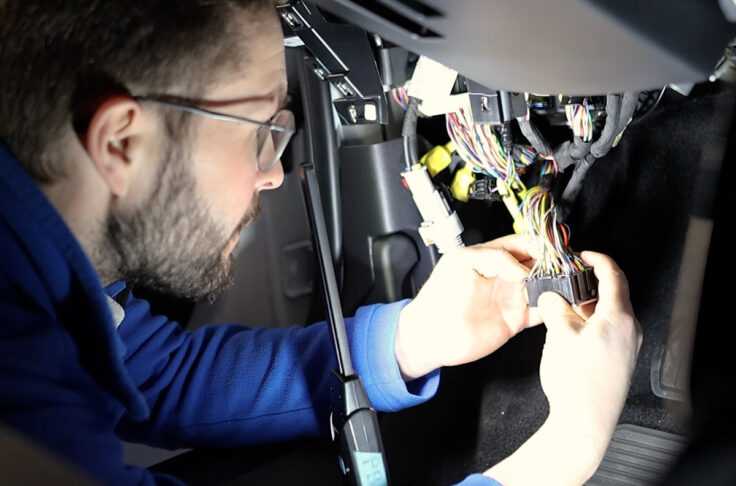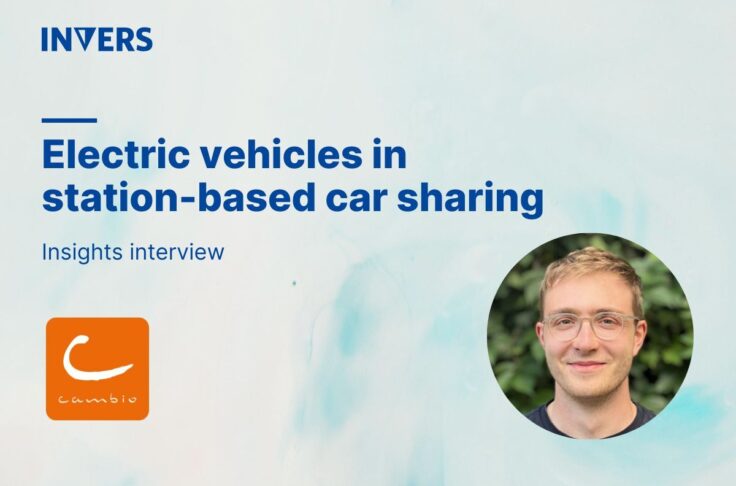Insights Interview on Teledriving in Car Sharing
Summary
As Vay is a pioneer in teledriving, we are delighted to speak with Mariona Bosch (VP Programs and Engineering Operations) and Justin Spratt (CBO) about their expertise in teledriving in car sharing. The topics included the USP of teledriving in car sharing, Vay’s track record in car sharing, the current policy landscape in the US and Europe, a look into the crystal ball and potential barriers towards wider adoption in car sharing. Vay develops automotive-grade technology for remote driving. They raised a USD 95 million Series B funding and in 2024, received an additional EUR 34 million from the European Investment Bank (EIB).

The European car sharing market is complex, featuring a diverse range of business models implemented on the streets. Operators employ various strategies, such as station-based services, peer-to-peer car sharing, and free-floating services, to address distinct use cases and offer distinct services. In addition, the European car sharing market is one of the largest and the most complex in the world. To address and explain some of these complexities, INVERS published their INVERS Mobility Barometer on “European Car Sharing 2024”. This 70-page report helps car sharing operators quickly understand key market dynamics, insights, and trends.
Table of Contents
A recent Techcrunch article said “Vay isn’t a traditional ride-hailing or car-sharing startup”. How would you describe Vay and how much car sharing DNA do you have?
Mariona Bosch: Vay combines the services offered by traditional car-sharing services with innovative automotive-grade teledriving technology to create a sustainable, door-to-door, driverless mobility solution. Vay users can book a car through the Vay app, similar to requesting a car-sharing vehicle. However, unlike traditional car-sharing companies, Vay eliminates the need to spend time searching for a nearby car or a parking spot. At the same time, it still provides users with the convenience and comfort of driving a vehicle as if it were their own.
What’s your track record in car sharing so far?
Mariona Bosch: Since launching our commercial service in January 2024, we have successfully completed over 4,000 trips and experienced increasing demand. To keep up with this growing demand, we are currently expanding our operations team, fleet, service area, and product offering in Las Vegas. A crucial part of this expansion involves adding 100 more cars to our fleet in the upcoming months and expanding our service area (or ODD – Operational Design Domain) to include even more attractive points of interest for our customers.
Can you tell us what makes this form of car sharing so unique and what is the user journey like?
Mariona Bosch: Vay’s unique advantage is having a human driver remotely controlling the vehicle in real time. With Vay, a user can request an electric vehicle through our app, and a trained teledriver remotely drives it to their location. Once the vehicle arrives, the user takes manual control and drives it like a regular car to their destination. After completing the trip, the user ends the rental in the app and exits the car without needing to park, as the teledriver handles parking or drives the vehicle to the next customer. This blend of human oversight and advanced technology offers a stress-free and flexible experience while also improving transport efficiency and traffic congestion in urban areas.
Could you share some of your customers’ feedback on your car sharing solutions?
Justin Spratt: Our customers often praise the convenience of Vay’s service, as many people find it to be a reliable solution for daily transportation. The car is delivered on demand to their doorstep, providing the experience of owning a car without the hassle of parking, maintenance, and repairs. They also appreciate the stopover feature, where the car waits at a reduced rate while they run errands, such as grocery shopping. Since no driver is waiting, this adds extra flexibility, allowing users to manage their time without added pressure or costs.
How does Vay view the current US and European policy landscape towards the technology?
Justin Spratt: We are pioneering the field of teledriving on public roads, something that has never been done before. As a result, there is no established blueprint for our work, and we must navigate the development of a regulatory framework step by step in close collaboration with the authorities. While regulatory hurdles in Europe require more time and cooperation to secure approvals, we are pleased to have initially launched our service in Las Vegas, where teledriving is explicitly permitted under Nevada law. This allowed us to gather valuable data on customer demand, customer usage, and operating demands required to deliver a high quality service.
Interesting developments are underway across Europe, in particular, Germany and Belgium. We are actively working with the authorities in Hamburg and Antwerp to obtain the next set of approvals.
What are your expectations for the future of teledriving services in car sharing?
Justin Spratt: Vay aims to address transportation problems in urban areas by making cities more sustainable, safer, and livable. Our mobility service offers the most affordable door-to-door alternative to car ownership. So, our expectation for the future is to roll out our services across hundreds of cities. That can help lower the overall number of cars in cities, contributing to less congestion and pollution while also making transportation more accessible to everyone.
What is currently the biggest barrier to widespread adoption of teledriving in car sharing?
Justin Spratt: The only barrier to widespread adoption is regulatory uncertainty, most acutely in Europe. While we’ve made significant progress in Las Vegas and are confident in our technological capabilities, scaling commercially requires a clearer regulatory framework across regions.
Further insights into the European car sharing market
Thank you, Mariona and Justin, for sharing your expert insights.
For more information and interesting findings about European car sharing, we encourage readers to check out our 70-page INVERS Mobility Barometer on “European Car Sharing 2024” with more expert interviews as well as insights from national car sharing associations. To discover more from Vay, please visit their website.


